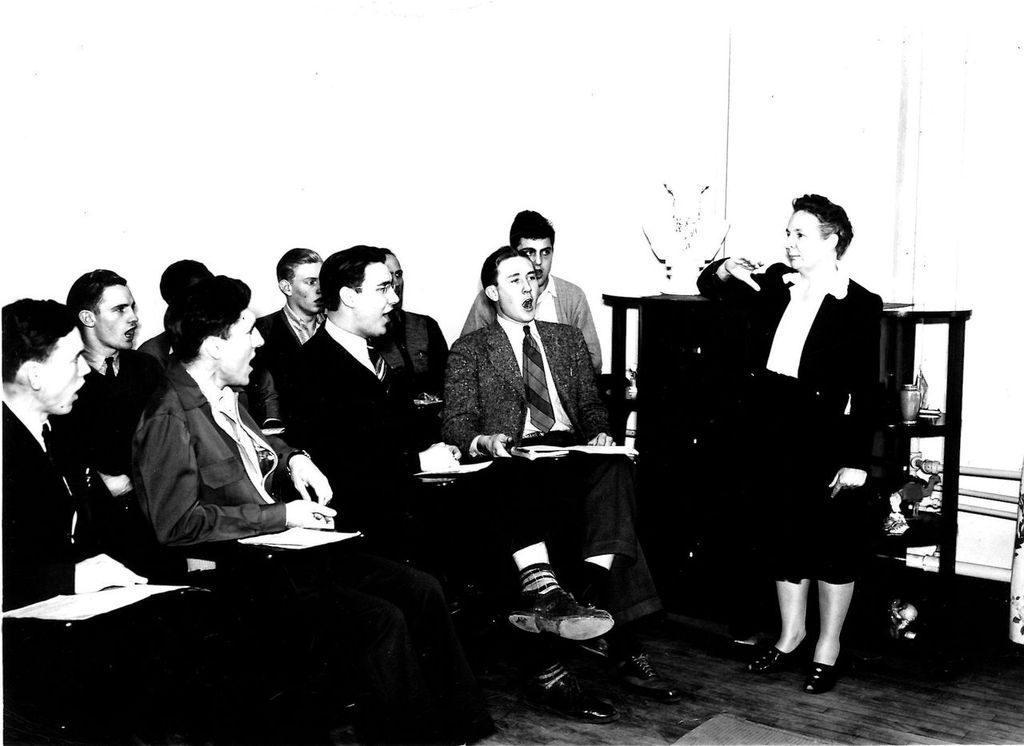Since 1970, Smith Hall has been a mainstay on the northeast side of Northwestern’s campus, and as the residents from Colenbrander Hall prepare to make the move to Smith Hall next schoolyear, it is important to be reminded of the legacy of Smith Hall’s namesake – Martha Fern Smith Rowenhorst.
Smith came from humble beginnings. In 1898, she was born in a sod house in the Sandhills of Neb. to Clarence K. Smith and Emma Amanda McAdams Smith. Her father was a cattle and hay rancher and broke horses for the army. Unfortunately, he died in a farm accident when Smith was just three years old. After her mother married John Porter, the family moved to Marysville, Kan. before settling on a ranch near Debeque, Colo. in 1905.
A few years later, tragedy struck the family again when Smith’s stepfather succumbed to tuberculosis in 1908. After that, the family decided to live closer to her grandparents in Grand Junction, Colo., where Smith’s mother married for the third time. Smith attended school through her high school years in Grand Junction, developing a love for music and taking piano lessons from Karl Hillyer at the Hillyer School of Music. According to a short biography about Fern Smith in the NW Archives, “Whenever she heard a piece of music in a concert or at school, she could go home and play ‘by ear’ the songs that she had heard.”
After high school, Hillyer encouraged her to attend Central College in Pella, Iowa, where she received her Bachelor of Music degree in 1919. Once she finished college, Smith taught at the Hillyer School of Music for a couple of years until an illness forced her to resign. What ultimately brought her to the Orange City area was when her brother-in-law, Arie Vander Stoep, was named the Superintendent of Schools in Maurice, Iowa. His wife, Smith’s sister, Leona, felt homesick, so Smith lived with the couple to keep Leona company. Smith gave piano lessons in Maurice and Orange City until Northwestern asked her to be the music teacher in 1928. She accepted, and the rest was history.
“From what I know, Fern Smith shepherded the fine arts programs at Northwestern during the junior college years,” NW library director Greta Grond said. “She started as a music teacher, which segued into helping with costumes and sets in the theatre department.”
Smith showed off her skills as a set and costume designer for multiple operettas until she shifted her focus to leading the A Cappella Choir in 1930. During her 24 years as director, she took her students to Reformed churches throughout the country to raise money for the college while also teaching nearly every music course NW offered.
Although she was short in stature, Smith knew how to get the most out of her students. The biography from the NW archives states, “Miss Smith was about 4’11”, and she directed with only her fingers right in front of her, and she expected every eye to be looking right there. If you goofed, her brown eyes snapped at you, and you knew you had better pay attention or be ‘out’ of the chorus.”
Many also knew Smith as a lifelong learner. She took graduate classes in art at the University of Colorado, which helped her establish NW’s art program in 1953. In addition, she took additional courses when she was appointed the college’s first dean of women in 1955.
“Fern was one of the first female leaders on campus,” Grond said. “Our fine arts tradition can be traced in part back to Ms. Smith’s efforts in demanding excellence from her performers.”
Smith retired in 1961, the year NW graduated its first four-year class. In that same year, at 62 years old, she reconnected with and married Herman Rowenhorst, who was the president of Northwestern State Bank. The two remained happily married until Rowenhorst’s death in 1967.
Three years later, NW built and named their new dorm after Smith to honor her years as a dedicated teacher and Christian. In the Winter 1970-1971 edition of The Classic, the author writes, “Because Fern Smith taught here, beauty is more easily recognized, and creativity is less elusive.”
Smith remained in the area until she died on Dec. 20, 1982, at 84. She was well-respected by her family and colleagues alike, and in the Spring 1983 version of The Classic, her nephew James Flikkema wrote, “She loved each student. She was a special lady, this aunt of mine. I am glad to have shared with her all those she taught. I know she is with Jesus, whose beauty will be so real to her as she lays her ‘crown of stars’ at His blessed feet.”
